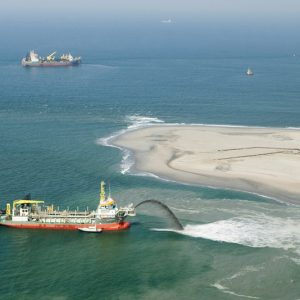“God created the earth, but the Dutch created the Netherlands.”
This saying comes from the fact that the Dutch have made many lakes, parts of the sea dry and created there own polders. You have to understand that 21% of its population is simply located below sea level, 20% of the Netherlands consists of polders that are pumped dry, and which are at risk of flooding if global warming causes rising sea levels. The history of Dutch water management dates back to about the 9th Century. But recently American and British politicians have been looking to the Netherlands for inspiration and expertise. This is as the Netherlands has the World’s most sophisticated laboratory for deltaic infrastructural experimentation. Being most notable the Delta Works and Zuiderzee Works which were declared by the American Society of Civil Engineers as the Seven Wonders of the Modern World. These works consists of over 10,000 miles of dikes and 13 dams manage to protect lives while also protecting the fragile estuary habitat. The environmentally-friendly water works allow fresh and salt water to flow and mix, but their gates can be closed quickly when storms come and sea levels rise, allowing people to control water and not the other way around. WATCH BBC TWO’s Coast – The Netherlands here. The picture above shows you a Dutch ship pumping material onto The Netherlands’ so-called Sand Engine project, a 28 million-cubic-yard heap of sand along the coast of Holland that will be rearranged by ocean currents and fortify a 12-mile buffer to protect the coastline. It’s one of Hollands latest innovation projects in regards to flood management. The Sand Engine aka Sand Motor (VIDEO) is a true signature project. This because of it’s coherent building around and with nature. Completed in late 2011 at a cost of 50 million euros ($67 million), the Sand Engine’s goal is to provide long-term fortification for eroding beaches as ocean currents gradually redistribute its dredged material. “The Sand Engine will feed beaches for about 20 years at half the price”, said Marcel Stive, chair of coastal engineering at the largest and oldest public Delft University of Technology (TU Delft) and principal creator of the technology. “At this moment, this is the safest coast we have,” Stive said. When the sand is fully spread out, it will protect 20 kilometers (12.4 miles) of shoreline from the current rate of sea-level rise, he said. If the amount of water increases, “we’ll just add more.” MORE: New Orleans commending Dutch Dialogues on a ‘Comprehensive, Sustainable Integrated Water Management Strategy’ after Katrina. Dutch design and engineering company Arcadis helping New York City against rising sea levels (VIDEO), Dutch Docklands and the Jan de Nul group are the World’s specialists in land reclamation and dredging. Responsible for the World’s largest artificial archipelago Palm Islands in Dubai. (Photo copyright of Rijkswaterstaat/Joop van Houdt)
